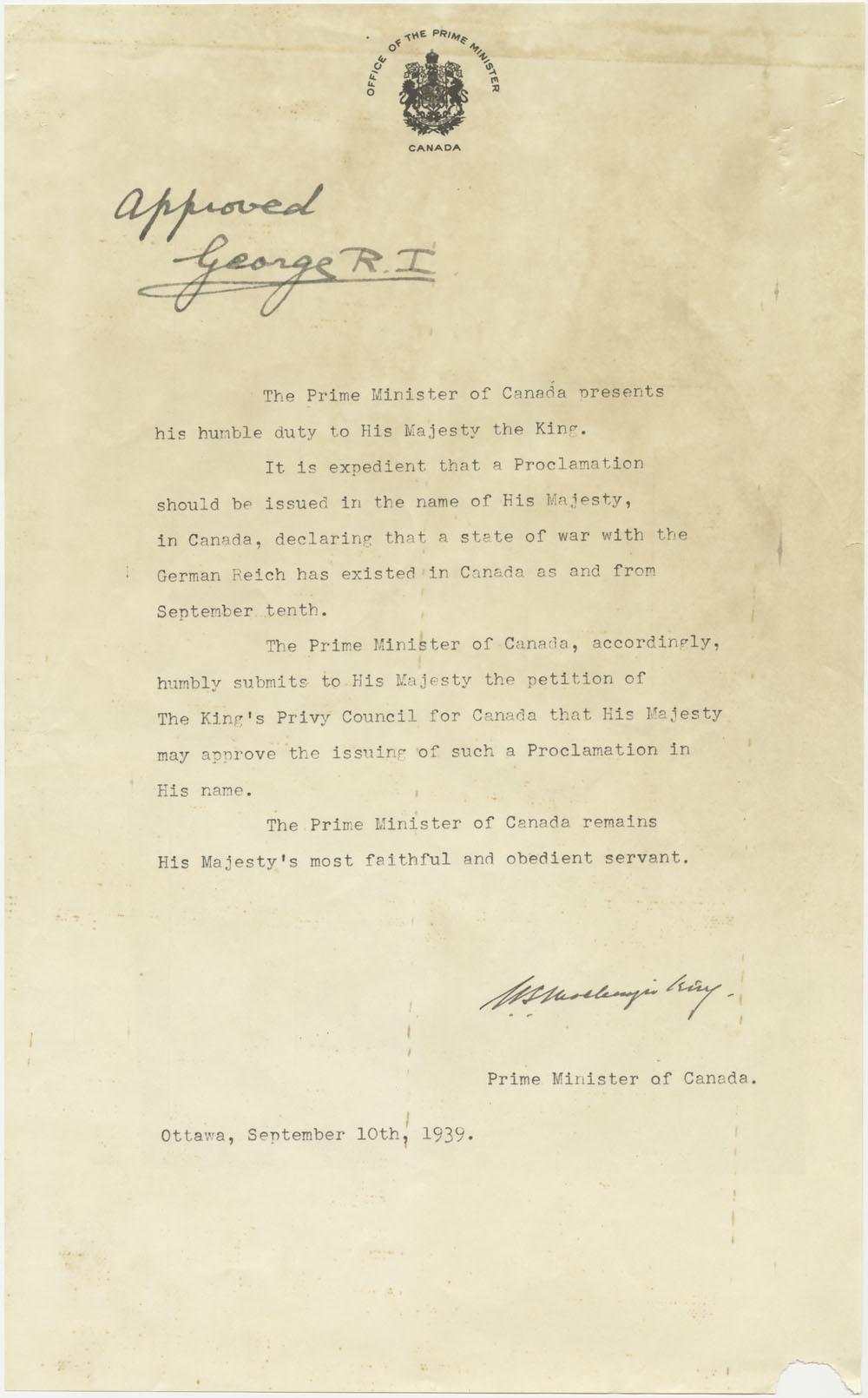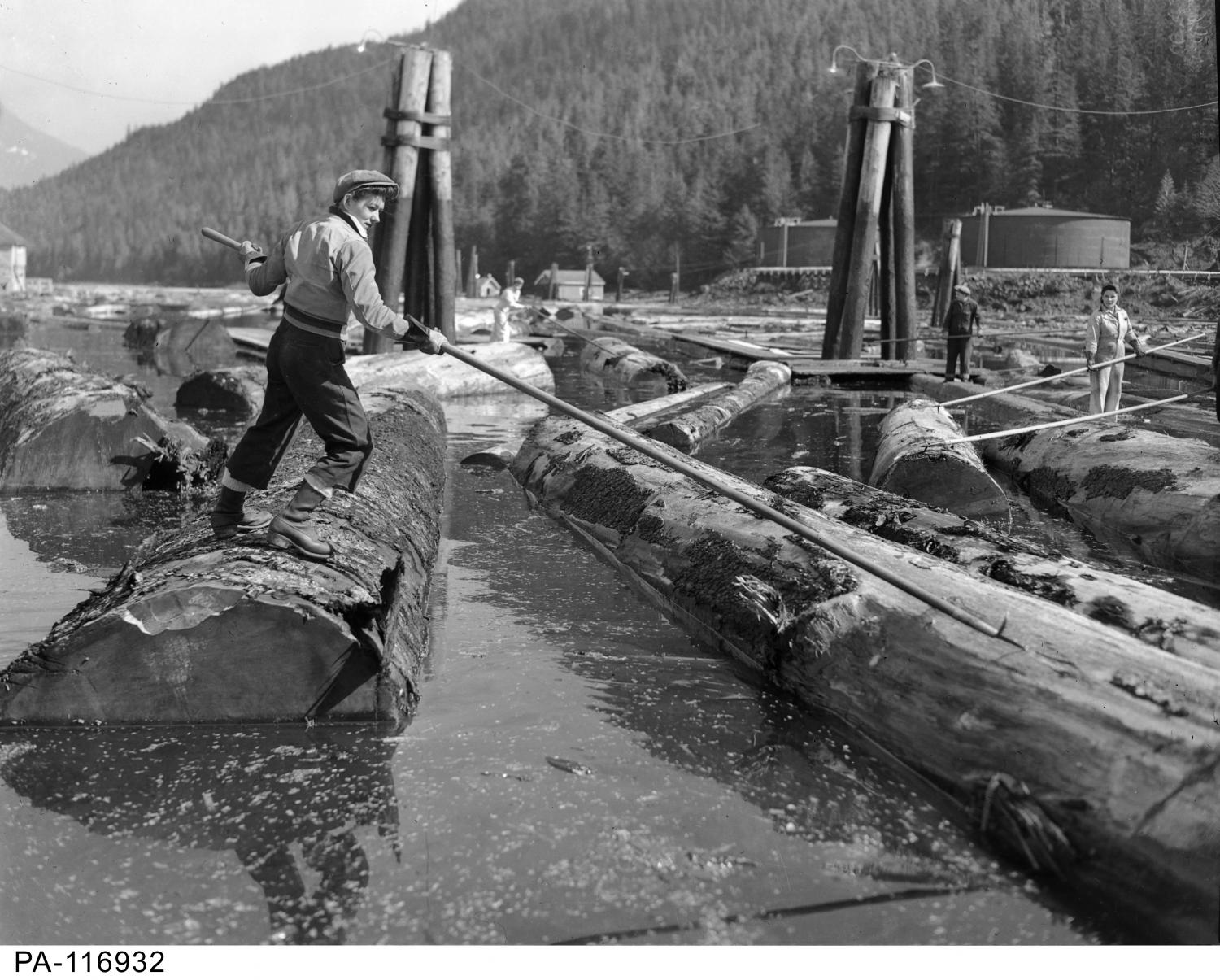The Second World War
Another cataclysmic conflict draws men overseas and industry to B.C.
Date: 1939
On Sept. 10, 1939, Canada officially entered the Second World War.
It wasn't a decision the country's leaders came to lightly. For many Canadians, memories of the First World War — the horrors in and between the trenches — remained fresh in their minds, even 20 years later. But tensions had been brewing between Nazi Germany and Britain, France, and the Soviet Union in recent years. War was growing ever more likely by the day.
And then on Sept. 1, Germany invaded Poland. Within two days, France, Britain, New Zealand and Australia all declared war. Canada, however, held back, weighing whether to embroil itself in the crisis overseas. When Prime Minister William Lyon Mackenzie King's government finally put forth a vote on the matter on Sept. 10, there were stipulations. Recognizing Québec's opposition to conscription in WWI, Mackenzie King promised not to conscript men for overseas battle. Further, Canada's role in the war would be understood as a "limited liability," mainly providing food, supplies, air force training, as well as manufacturing munitions for the effort.
The vote on September. 10th was almost unanimous, supported by French and English Canadian politicians alike. But this mix of wariness of and support for the war extended beyond the halls of parliament. Unlike the early days of the Great War, there would be no parades or grand displays of patriotism. Nevertheless, within the first month of Canada's declaration, more than 58,000 Canadians had voluntarily enlisted. Before the end of the year, troops had already begun heading to Britain.
At first, British Columbia was more removed from the war effort than other provinces. In recent years, the military defences along its coastline had been buffed. And even before Canada had declared war, the government had ordered hundreds of voluntary militia to move to what were considered "vulnerable points" along the coast, like Victoria, Vancouver, Prince Rupert, and Yorke Island, a small islet off the north coast. But these were largely precautionary measures. For the average British Columbian, the war meant a stable income after a decade of depression. The poorest saw enlisting as a surefire way to reclaim some sort of dignity.
But by 1940, things were looking grim for Canada's allies. Axis powers had beaten back British forces. In April, the Nazis took Denmark and Norway with little resistance. By early summer, France had surrendered to Germany. Much of Europe was now in Hitler's hands, and Canada's commitment to a "limited" war appeared in doubt. After significant public pressure from English-speaking Canadians to increase the country's involvement, the federal government passed the National Resources Mobilization Act (NRMA) in June 1940. It required all eligible men to register for potential service defending the home front.
Canada's new engagement in the war meant a greater need for munitions, aircraft, and other heavy military equipment. Much of the manufacturing of these goods took place in B.C. — a single shipyard in North Vancouver produced nearly half of all cargo ships transporting raw goods and supplies to the front lines in Europe and Asia. The high demand for labour made the province a destination for those seeking industrial work. At one point, as many as 30,000 people — men and women — were employed in B.C.'s shipyards.
This new demand for workers transformed the workforce in ways similar to the Great War had. The European theatre had drawn the young men who would typically fill these positions overseas. Back home, there was now a void of manpower. Demand necessitated droves of women step up and take on work outside of the home, on top of their traditional domestic roles. From offices to shipyards to factories, women were now crucial participants in what had become one of the world's leading industrial powers.
But a growing sense of disquiet soon loomed over the newly-bustling economy. Japan was making moves across the Pacific. Between the attack on Pearl Harbor, Japan's occupation of two Alaskan islands, and the shelling of Vancouver Island's Estevan Point, the war was now uncomfortably close for British Columbians. The proximity led to a greater sense of duty in the province. By the war's end, more than 90,000 men and 26,000 women from B.C. had enlisted: the highest rate of enlistment per capita in Canada.
However, this heightened threat not only inspired patriotism, but something more insidious: an intense xenophobia directed towards Japanese Canadians had infected the province. Soon, this bigotry would be formalized in an oppressive wartime measure that would last for seven of British Columbia’s darkest years.
Sources:
-
Barman, Jean. The West beyond the West: a History of British Columbia. University of Toronto Press, 2007.
-
Belshaw, John Douglas. “Canada Goes to War.” Canadian History: Post-Confederation, BC Campus Open Education, 17 May 2016, opentextbc.ca/postconfederation/chapter/6-10-canada-goes-to-war/.
-
Belshaw, John Douglas. “Enlisted Women, Conscription, and the Zombie Army.” Canadian History: Post-Confederation, BC Campus Open Text, 17 May 2016, opentextbc.ca/postconfederation/chapter/6-16-conscription-and-the-zombie-army/.
-
Belshaw, John Douglas. “The Road to WWII.” Canadian History: Post-Confederation, BC Campus Open Education, 17 May 2016, opentextbc.ca/postconfederation/chapter/6-9-the-road-to-wwii/.
-
Britten, Liam. How Metro Vancouver Has Changed since Canada Entered WWII 80 Years Ago. CBC News, 10 Sept. 2019, www.cbc.ca/news/canada/british-columbia/second-world-war-vancouver-1.5273708.
-
“Canada at Britain's Side, 1939-1942.” Democracy at War: Canadian Newspapers and the Second World War, Canadian War Museum, www.warmuseum.ca/cwm/exhibitions/chrono/1931britains_side_e.html.
-
“Canada Goes to War: The Country Decides What Role It Will Play as Hitler's Army Sweeps through Europe.” Canada: A People's History, CBC News, www.cbc.ca/history/EPISCONTENTSE1EP13CH4PA3LE.html.
-
A History of Canadian Soldiers in World War 2. Forces War Records, ca.forces-war-records.com/a-history-of-canadian-soldiers-in-world-war-2/.
-
McDonald, Paige. If Japan Should Attack: Perceptions of Fear and Threat in British Columbia’s Newspapers, 1941-1943. Carleton University, 2016, curve.carleton.ca/system/files/etd/a7cdc87c-5284-4f25-b0c8-b387256a4a37/etd_pdf/ae721c1204609d6b85bad08fae15aeb9/mcdonald-ifjapanshouldattackperceptionsoffearandthreat.pdf.
-
“Politics and Government: Conscription.” Democracy at War: Canadian Newspapers and the Second World War, Canadian War Museum, www.warmuseum.ca/cwm/exhibitions/newspapers/canadawar/conscription_e.html.
-
Second World War (1939 – 1945). Veterans Affairs Canada, www.veterans.gc.ca/eng/remembrance/history/second-world-war.
-
“The Second World War.” Democracy at War: Canadian Newspapers and the Second World War, Canadian War Museum, www.warmuseum.ca/cwm/exhibitions/newspapers/intro_e.html.
-
Stacey, Colonel C.P. The Canadian Army 1939 – 1945: An Official Historical Summary . www.canada.ca/content/dam/themes/defence/caf/militaryhistory/dhh/official/book-1948-army-1939-1945-en.pdf.
-
World War II. Encyclopædia Britannica, www.britannica.com/place/Canada/World-War-II.






